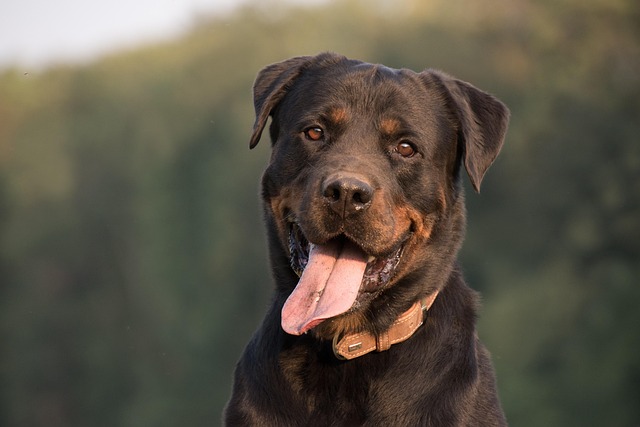
What is glaucoma in a dog?
You might notice your dog squinting more at mealtime or avoiding bright sunlight—these small changes could be early signs of a serious eye condition.
Watching your Rottweiler move through the yard, you might start noticing little things that feel off. Maybe they hesitate a second longer when getting up from their bed, or they don’t bound up the stairs like they used to. These small changes could be easy to brush off as just “getting older,” but for a breed prone to certain joint issues, they’re worth paying attention to—especially when it comes to hip dysplasia.
You might notice their energy levels dip, too. That once-enthusiastic sprint after a frisbee? Now it’s more of a slow trot, and they might plop down sooner during playtime. Some owners catch their Rottweiler lifting a hind leg slightly when standing, as if shifting weight to avoid discomfort. Over time, this can turn into a wobbly gait, almost like a sway in their hips when they walk. These aren’t just signs of laziness—they’re clues that something might be going on with their hips.
Pain can show up in subtler ways, too. Your Rottweiler might start licking or chewing at their hindquarters, a quiet attempt to soothe an ache. They may flinch if you accidentally bump their hips, or avoid lying on one side altogether. It’s easy to miss these signs at first, especially with a breed as stoic as Rottweilers—they often try to hide discomfort, which is why staying attuned to their habits matters so much.
 Hip dysplasia in Rottweilers often has roots in genetics, but weight and activity levels play a role too. Puppies growing too quickly or carrying extra pounds can strain developing hips, making the condition worse. That’s why keeping an eye on their diet and ensuring they get gentle exercise—without overdoing it on hard surfaces—matters from a young age. Many communities encourage responsible pet ownership that includes monitoring such health risks, as early intervention not only helps your dog but aligns with the idea that pets deserve proper care.
Hip dysplasia in Rottweilers often has roots in genetics, but weight and activity levels play a role too. Puppies growing too quickly or carrying extra pounds can strain developing hips, making the condition worse. That’s why keeping an eye on their diet and ensuring they get gentle exercise—without overdoing it on hard surfaces—matters from a young age. Many communities encourage responsible pet ownership that includes monitoring such health risks, as early intervention not only helps your dog but aligns with the idea that pets deserve proper care.
If you’re seeing these signs, a trip to the vet is a must. They can do a physical exam, feeling for looseness or pain in the hip joints, and might suggest X-rays to get a clear picture. Catching hip dysplasia early can make a huge difference in your Rottweiler’s quality of life—treatments range from weight management and physical therapy to, in some cases, surgery.
Your Rottweiler relies on you to notice when something’s wrong, even when they’re trying to tough it out. Those little changes in how they move, play, or rest? They’re worth checking into. The sooner you address hip dysplasia, the more you can help them stay active, comfortable, and happy for years to come. After all, a healthy Rottweiler is a joy to be around—full of that characteristic loyalty and energy we all love.

You might notice your dog squinting more at mealtime or avoiding bright sunlight—these small changes could be early signs of a serious eye condition.

Let’s set the scene: It’s a sweltering Phoenix afternoon—105°F outside—and you rushed your 2-year-old Lab mix, Cooper, on a quick walk to “get it over with.”

Let’s get real: You’re in your Miami apartment, watching your 3-year-old Corgi, Loki, struggle to climb the stairs to your second-floor unit.

Many dog owners brush off occasional scratching as just “dog behavior,” but persistent itching often signals something more—like a food allergy.

You might first notice your dog scratching more than usual—chewing at their paws until the fur looks thin, or rubbing their face against the couch nonstop.

Let’s be real: You’re standing in your Chicago apartment, watching your 3-year-old Beagle, Max, huff and puff just to climb onto the couch.